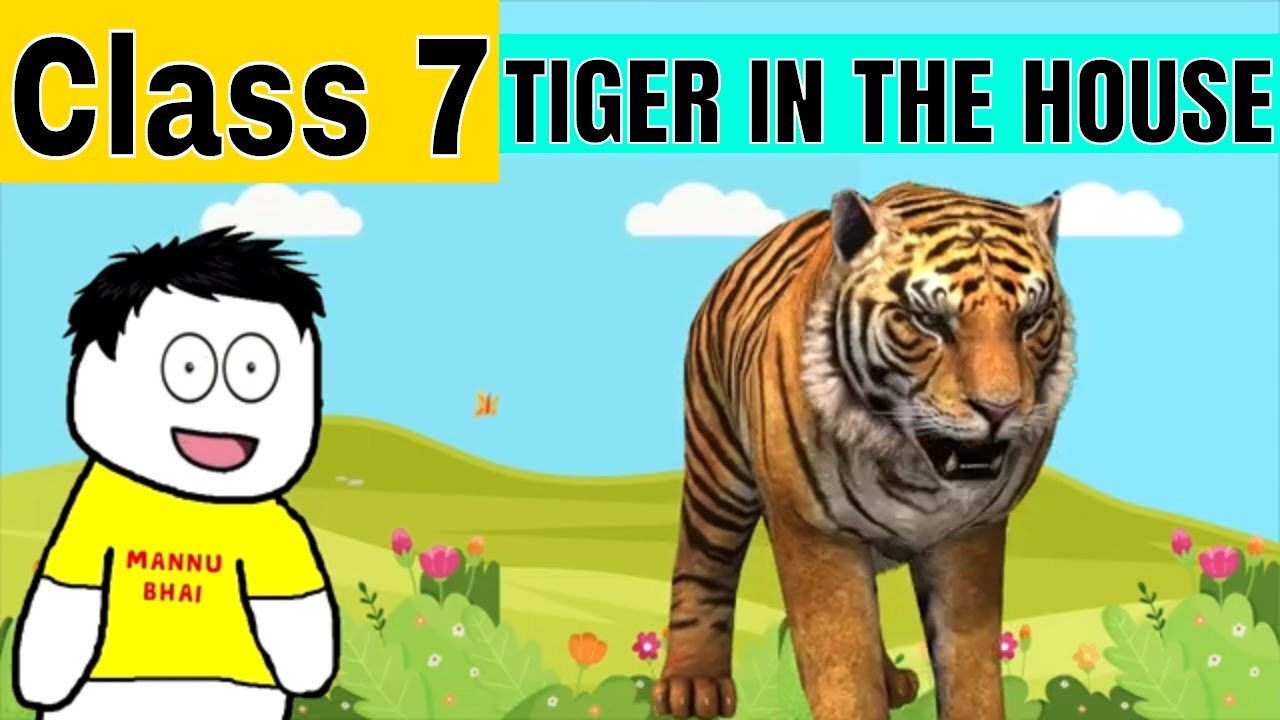
About Lesson
Chapter Title: A Tiger in the House
Summary:
Introduction:
- Grandfather discovers a tiny tiger cub in the forest during a stroll and brings him home.
- Grandmother names him Timothy and raises him as if he were a human child, along with other household pets.
Description of the Story:
-
Discovery and Early Days of Timothy:
- Grandfather finds a tiger cub hiding in the forest and brings him home, becoming the only successful member of the hunting party.
- The tiger cub, named Timothy by Grandmother, is initially fed on milk but later put on a diet of raw mutton and cod-liver oil.
-
Timothy’s Companions and Playful Nature:
- Timothy is provided with companions: Toto the monkey and a small puppy found by Grandfather.
- Despite initial fear, Timothy becomes friendly with the puppy and enjoys playing with household members, especially the narrator.
-
Timothy’s Growing Size and Behavior:
- As Timothy grows, he becomes the size of a full-grown retriever and displays playful but mischievous behavior.
- He loves to stalk and play with people, demonstrating a playful and sometimes unpredictable nature.
-
Grandfather’s Decision to Transfer Timothy to the Zoo:
- Timothy’s behavior becomes less friendly and more dangerous, including attempts to attack other animals.
- Grandfather decides to transfer Timothy to the zoo for the safety of the household and others.
-
The Reunion at the Zoo:
- Six months later, Grandfather visits Timothy at the zoo and attempts to interact with him through the bars of the cage.
- To Grandfather’s surprise, the tiger responds affectionately, licking his hands and allowing him to stroke him.
-
The Shocking Revelation:
- After spending some time with Timothy, Grandfather realizes from a zookeeper that the tiger he is interacting with is not Timothy but another tiger that arrived at the zoo recently.
- Shocked and alarmed, Grandfather quickly withdraws from the cage and leaves the zoo.
Explanation of the Text:
- The story narrates the experience of raising a tiger cub as a pet in a household setting and the challenges encountered as the tiger grows older and more unpredictable.
- It depicts the bond between Timothy and the family members and the eventual decision to transfer him to the zoo due to safety concerns.
Discussion Points:
-
Ethical Treatment of Animals:
- Discuss the importance of treating animals ethically and the implications of keeping a wild animal as a pet.
-
Impact of Pets on Human Life:
- Explore how keeping pets influences human behavior, attitudes, and emotions, emphasizing the need for responsible pet ownership.
-
SPCA and Animal Welfare:
- Discuss the role of the Society for Prevention of Cruelty to Animals (SPCA) in ensuring the welfare and protection of animals.
The Competition:
- The teacher asks Belinda about Bill’s absence, and Belinda explains that he won a competition by leaning out of the window the farthest, causing him to fall ill.
Join the conversation
